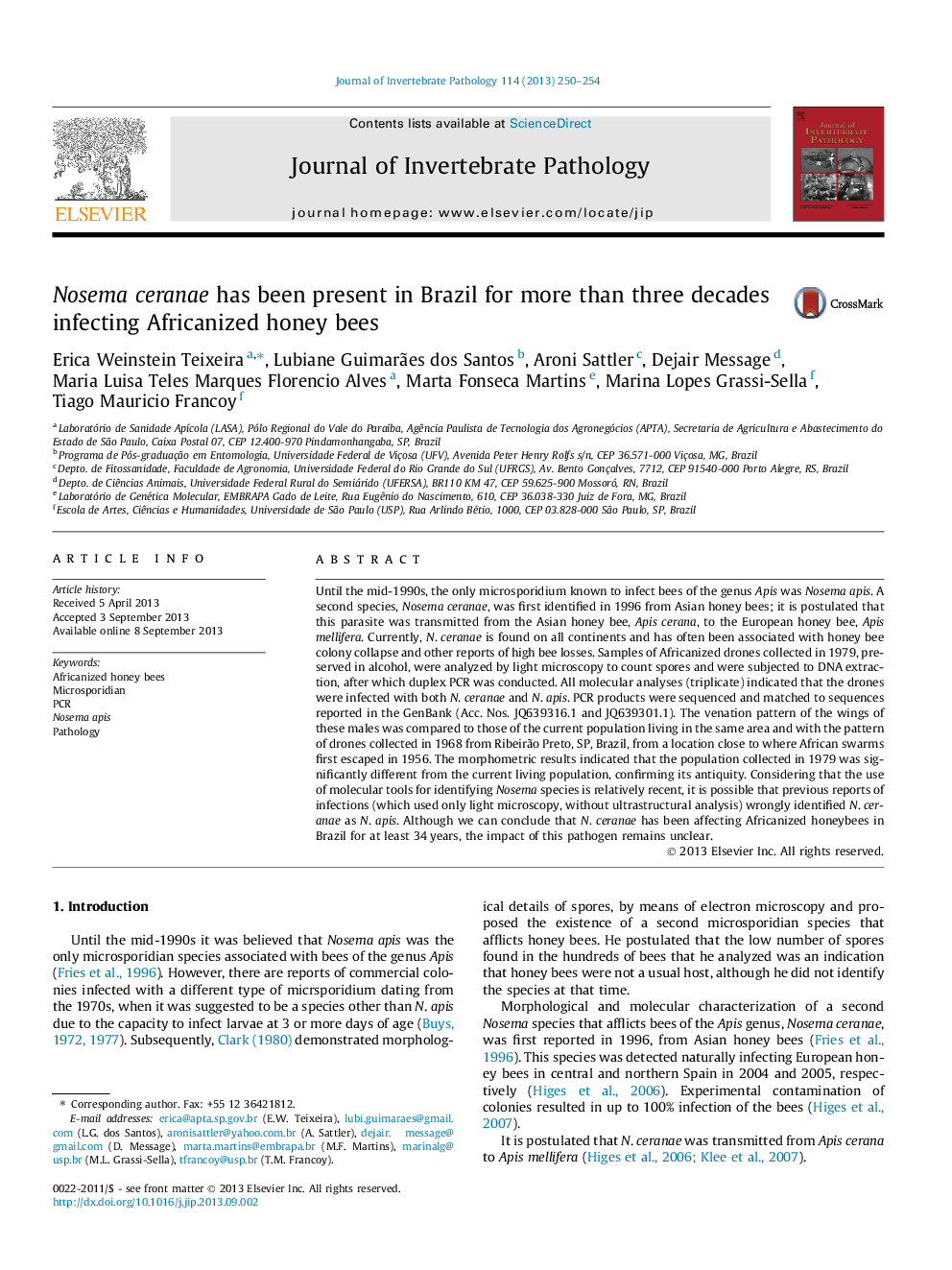| کد مقاله | کد نشریه | سال انتشار | مقاله انگلیسی | نسخه تمام متن |
|---|---|---|---|---|
| 4557755 | 1329896 | 2013 | 5 صفحه PDF | دانلود رایگان |

• Nosema ceranae was found in Apis mellifera from Brazil 34 years before the present.
• N. ceranae has infected honey bees for longer than previously assumed.
• Historical samples can help to understand the spread of N. ceranae.
Until the mid-1990s, the only microsporidium known to infect bees of the genus Apis was Nosema apis. A second species, Nosema ceranae, was first identified in 1996 from Asian honey bees; it is postulated that this parasite was transmitted from the Asian honey bee, Apis cerana, to the European honey bee, Apis mellifera. Currently, N. ceranae is found on all continents and has often been associated with honey bee colony collapse and other reports of high bee losses. Samples of Africanized drones collected in 1979, preserved in alcohol, were analyzed by light microscopy to count spores and were subjected to DNA extraction, after which duplex PCR was conducted. All molecular analyses (triplicate) indicated that the drones were infected with both N. ceranae and N. apis. PCR products were sequenced and matched to sequences reported in the GenBank (Acc. Nos. JQ639316.1 and JQ639301.1). The venation pattern of the wings of these males was compared to those of the current population living in the same area and with the pattern of drones collected in 1968 from Ribeirão Preto, SP, Brazil, from a location close to where African swarms first escaped in 1956. The morphometric results indicated that the population collected in 1979 was significantly different from the current living population, confirming its antiquity. Considering that the use of molecular tools for identifying Nosema species is relatively recent, it is possible that previous reports of infections (which used only light microscopy, without ultrastructural analysis) wrongly identified N. ceranae as N. apis. Although we can conclude that N. ceranae has been affecting Africanized honeybees in Brazil for at least 34 years, the impact of this pathogen remains unclear.
Figure optionsDownload as PowerPoint slide
Journal: Journal of Invertebrate Pathology - Volume 114, Issue 3, November 2013, Pages 250–254